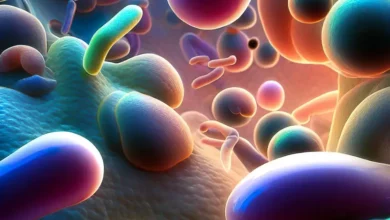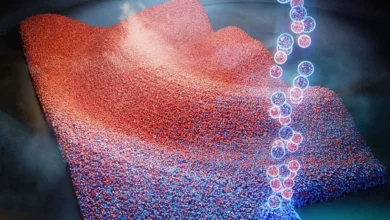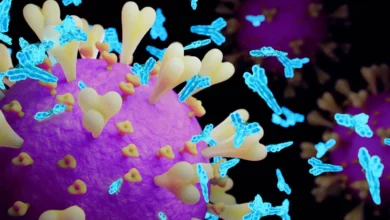Latest Articles
-
Jun- 2023 -21 JuneMaterials Science

“Hydration Solids”: The New Class of Matter Shaking Up Science
We have long known that biological materials absorb ambient moisture. But new research from Columbia shows that ambient water is much more central to the character of natural materials such as pine cones, fungi, and other plants and trees than was previously known. A recent study argues that materials like wood, bacteria, and fungi belong to a newly identified class of matter, “hydration solids.” For many years, the fields of physics and chemistry have held the belief that the properties of solid materials are fundamentally determined by the atoms and molecules they consist of. For instance, the crystalline nature of…
Read More » -
21 JuneClimate Change

El Niño’s Surprising Lifeline: Ocean Current Safeguards Pacific Island Reefs
Aerial view of Palmyra Atoll. Credit: © 2023 KAUST; Richard Brooks Scientists have found that unique ocean processes during El Niño events can help coral reefs survive the heat stress brought by climate change. Specifically, the strengthened North Equatorial Counter Current during El Niño brings cooler, nutrient-rich waters to some reefs, helping them resist heat-induced bleaching. The findings could inform future conservation strategies for coral reefs. Marine heatwaves are emerging as a key impact of climate change and pose a particularly significant threat to corals that form the backbone of coral reefs. Researchers have now identified a phenomenon that could…
Read More » -
18 JuneHealth

Dads Make the Difference: The Impact on Breastfeeding Moms and Infant Sleep Safety
A study from Northwestern University and Ann & Robert H. Lurie Children’s Hospital of Chicago underscores the influential role fathers play in promoting breastfeeding and safe infant sleep practices. The research, utilizing a new survey tool called PRAMS for Dads, points to a significant increase in breastfeeding rates where fathers were supportive, while revealing that full adherence to recommended safe sleep practices was relatively low. The study also identifies racial disparities in safe sleep practices. Including fathers in strategies to improve infant health could help narrow disparities. Findings highlight racial disparities in sudden unexpected infant death in the U.S. Only…
Read More » -
7 June3D Printing

Revolutionary 3D Printing Technology a “Game Changer” for Discovering and Manufacturing New Materials
High-throughput combinatorial printing illustration. The new 3D printing method, high-throughput combinatorial printing (HTCP), drastically accelerates the discovery and production of new materials. Credit: University of Notre Dame A novel 3D printing method called high-throughput combinatorial printing (HTCP) has been created that significantly accelerates the discovery and production of new materials. The process involves mixing multiple aerosolized nanomaterial inks during printing, which allows for fine control over the printed materials’ architecture and local compositions. This method produces materials with gradient compositions and properties and can be applied to a wide range of substances including metals, semiconductors, polymers, and biomaterials. The time-honored…
Read More » -
6 JuneCOVID-19

Detecting Neutralizing Antibodies for COVID-19: A Novel Technique Uncovered by MIT Chemists
Lead Image: MIT chemists have come up with a new way to identify neutralizing antibodies, depicted here in light blue, against SARS-CoV-2 in a blood sample. Credit: iStock The method could enable a rapid test to determine whether individuals are producing antibodies that help protect against COVID-19. MIT scientists have developed a novel technique that uses lectin displacement to detect neutralizing antibodies against viruses like SARS-CoV-2, offering a way to assess vaccine effectiveness and potential protection against virus variants. They have applied for a patent for this technology. Antibodies that can disarm a virus, known as neutralizing antibodies, are key…
Read More »










